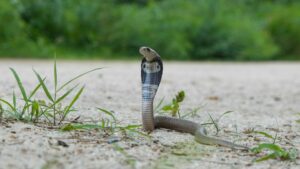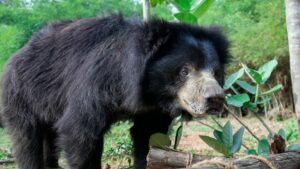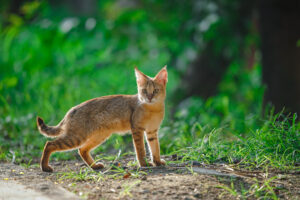Over the past few months, Wildlife SOS’s Rapid Response Units in Agra and Delhi NCR have been busier than ever. With the onset of the monsoon and the slow transition into cooler months, our rescue team received hundreds of calls over the past couple of months, many from residential areas, schools, and factories. In Agra alone, the team rescued over 120 reptiles in September, a reminder of how changing weather patterns, shrinking habitats, and the effects of climate change are driving snakes closer to human settlements. Among the rescued reptiles were 25 Indian rat snakes, 24 common wolf snakes, 21 spectacled cobras, 18 Indian rock pythons, 12 common kraits, and 12 Bengal monitor lizards, along with several others.
The same was the story in Delhi, where our teams saved more than 200 reptiles. While many residents were startled by the sudden appearance of these creatures, each rescue played a crucial role in preventing conflict and ensuring these animals were safely released into their natural habitats.
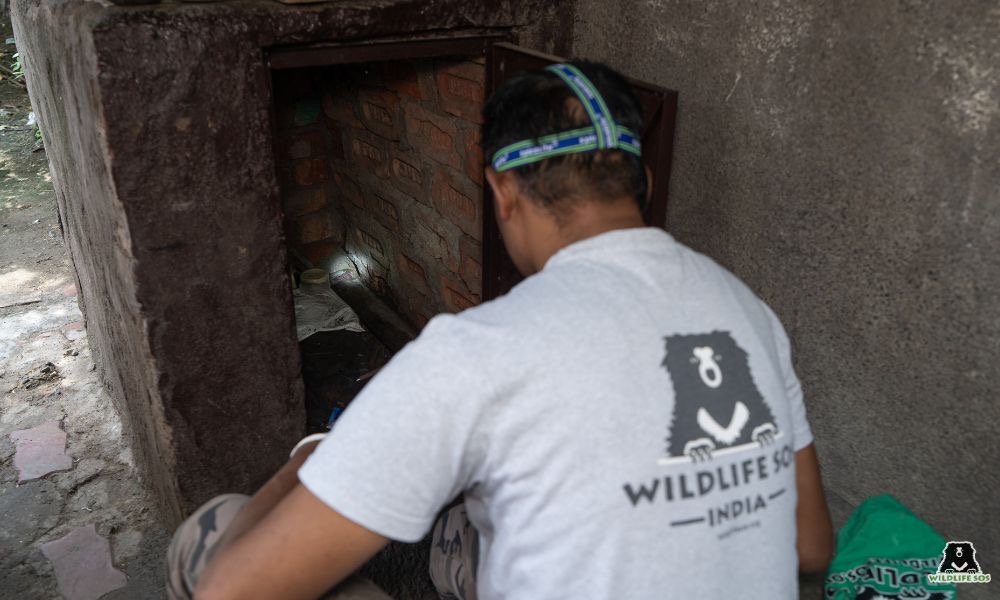
As temperatures begin to drop in September and October, snakes instinctively sense the approaching winter. In preparation, they forage actively for food, seeking the meal before entering a state of dormancy known as brumation — the reptilian equivalent of hibernation. During brumation, snakes slow their metabolism to survive the cold, retreating into burrows, rock crevices, tree roots, or abandoned structures that offer insulation. However, many of these natural shelters have been disrupted by urban development, forcing snakes to adapt and seek refuge elsewhere. Warm, dry spaces such as basements, godowns, or piles of construction debris often mimic the secure conditions they need, drawing them closer to human dwellings.
This seasonal behaviour however can be seen even during the monsoon period, when the environment undergoes major ecological changes. Rains flood natural burrows and nesting sites, pushing snakes out into the open. Simultaneously, the rains cause a boom in prey populations — rodents, frogs, and other small animals thrive in the moist conditions. Since these prey species also venture near human settlements in search of food, snakes naturally follow.
Agra, known for its mix of urban and semi-rural landscapes, provides an ideal case study. The reptile rescues in September alone highlight the city’s shifting ecological balance. The diversity of species rescued include both venomous cobras and kraits to non-venomous rat snakes and wolf snakes. In one instance, the team safely rescued a cobra from Chhalesar railway station, preventing panic among commuters. In another, a five-foot-long python was found stretched across a busy highway, temporarily blocking traffic before it was gently captured and relocated. Yet another python was rescued from the residential quarters of the Air Force Station in Agra, underscoring how deeply intertwined reptile movement has become with urban spaces.

While many may associate snake encounters with fear, each rescue also represents a success story in conflict mitigation. Timely calls prevent snakes from being harmed, and awareness about the species being generated among people. Wildlife SOS has trained rescuers that ensure the snakes are carefully extracted, observed for injuries, and released into safe, suitable habitats away from human habitation. These operations not only prevent harm to the snakes, but also reduce panic or any attempt to handle snakes without professional help.
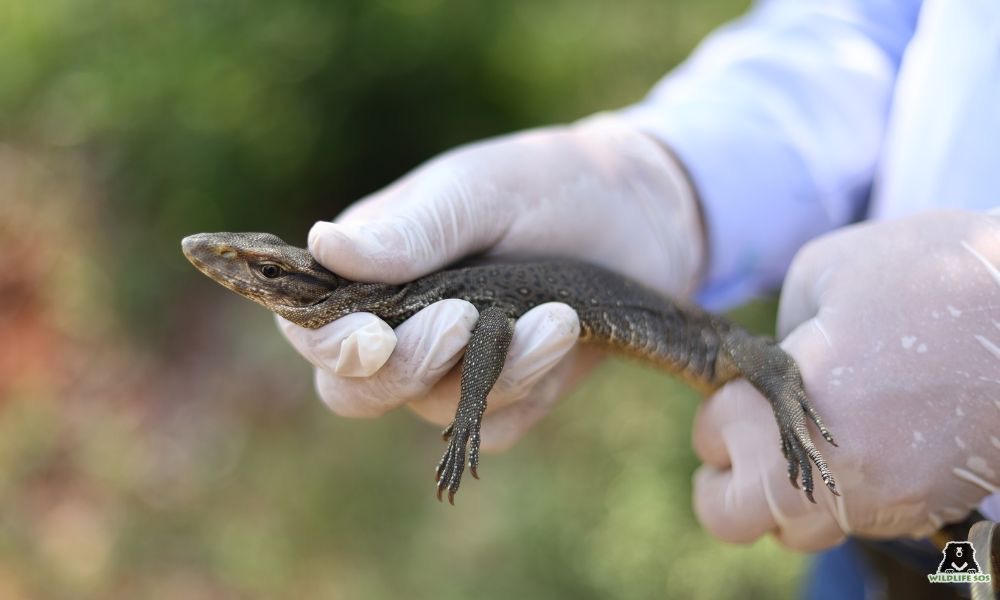
The pattern has been similar in Delhi, where urban density and flooded habitats have kept the Rapid Response Unit on constant alert. Recently, a Bengal monitor lizard was rescued from the Mayur Vihar Metro Station, astonishing morning commuters. On the same day, a python was found inside the Sarvodaya Kanya Vidyalaya in Delhi, and a rat snake was rescued from the Delhi Police Academy in Model Town, highlighting the adaptability of these reptiles and the wide range of urban environments they now navigate.
Beyond these seasonal and ecological reasons, there is growing scientific evidence that climate change is altering the distribution of snakes across India. A recent study published in PLOS Neglected Tropical Diseases, titled “Future of snakebite risk in India: Consequence of climate change and the shifting habitats of the Big Four species in the next five decades”, sheds light on this worrying trend. The research predicts that India’s Big Four venomous snakes – the Indian cobra (Naja naja), common krait (Bungarus caeruleus), Russell’s viper (Daboia russelii), and saw-scaled viper (Echis carinatus), will gradually migrate northward and northeastward in response to rising temperatures and humidity. This means that regions like Delhi, Haryana, and parts of Uttar Pradesh are likely to see more venomous snakes and experience frequent encounters with them in the future.
The paper notes that states such as Manipur, Meghalaya, Nagaland, and Arunachal Pradesh, which currently lack suitable habitats, could see over a 100% increase in habitat suitability for these species in the coming decades. Conversely, traditional snake-rich areas in southern India, such as parts of Karnataka, may witness mild declines. This range expansion directly correlates with rising snakebite risk in northern India, especially in densely populated agricultural and urban areas. As snakes disperse into new regions seeking optimal climates and prey availability, the number of encounters with humans are bound to go up.
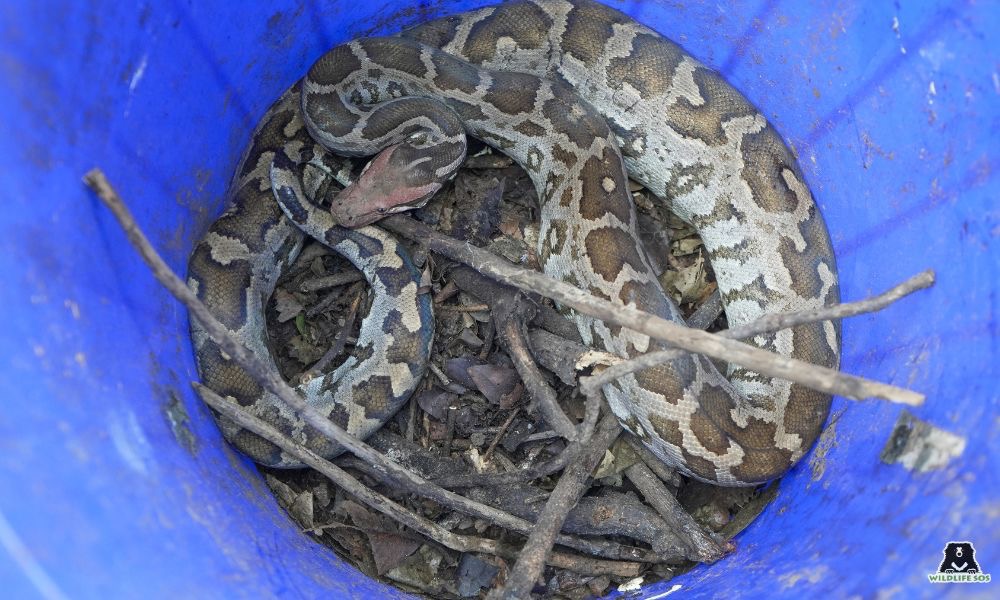
While climate change acts as a long-term driver, rapid urbanisation remains a major immediate threat to snake habitats. Delhi NCR and Agra have seen significant land-use change — open green spaces are being converted into residential colonies, roads, and industrial zones. This not only destroys natural cover, but also isolates wildlife populations, forcing them to adapt to fragmented environments. Each of these factors contributes to the increasing likelihood of snake encounters, particularly in the post-monsoon and pre-winter months.
The steady rise in rescue calls highlights the importance of community awareness and rapid-response mechanisms. With our dedicated 24-hour rescue hotline, residents across Delhi NCR and Agra can seek immediate assistance when they spot a snake. Each call represents a life saved – both human and reptilian. After each rescue, through community outreach, our rescue unit also educates people on what to do during an encounter with a snake: keep a safe distance, avoid attempts to capture or kill snakes, and contact trained rescuers if the snake is found in distress.
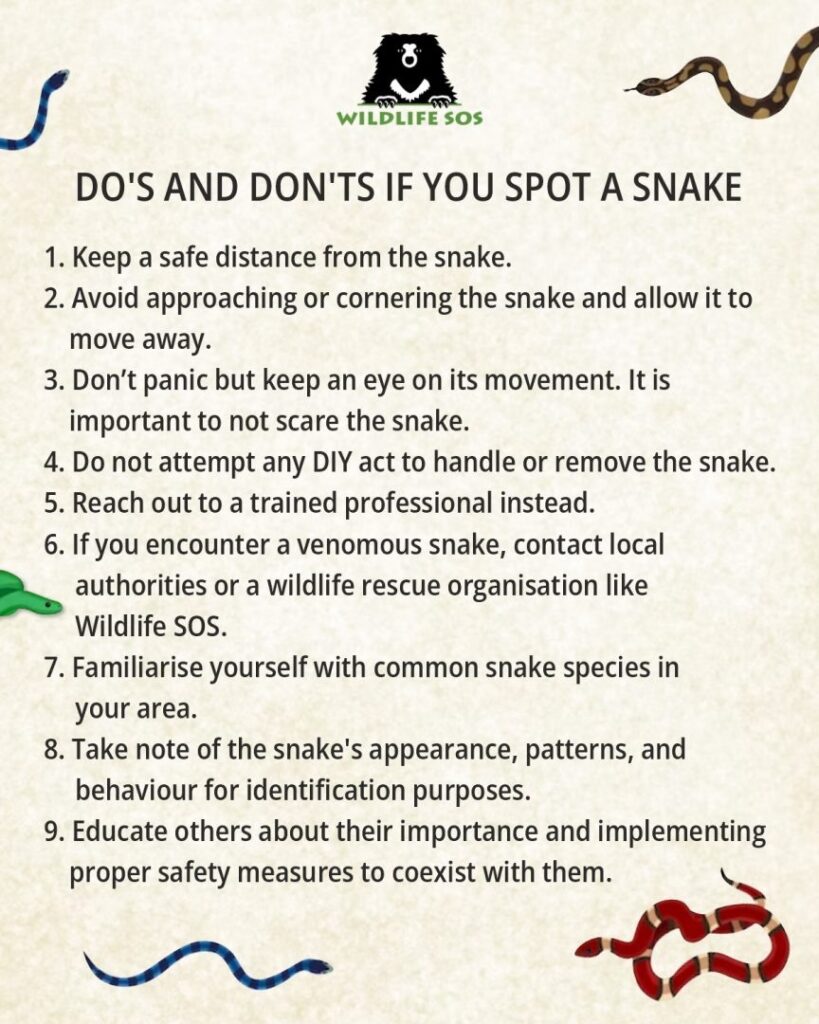
The findings from recent climate studies make one thing clear: snake ecology in India is changing rapidly, and human-snake interactions are bound to increase in the coming years. As northern regions become more suitable for these reptiles, organisations like ours will play an even more important role in mitigating conflict, promoting awareness, and supporting scientific research. Snakes are vital to our ecosystems as they regulate rodent populations, maintain balance in food chains, and indicate the health of their habitats. Understanding their seasonal behaviour and adapting our practices accordingly can ensure peaceful coexistence even in an increasingly urbanised environment.
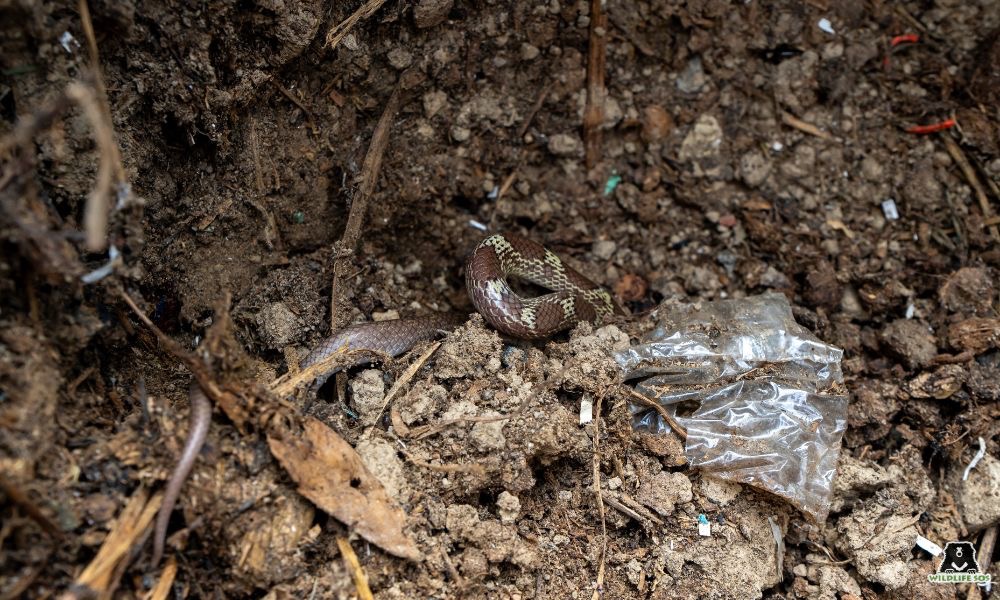
With continued monitoring, community engagement, and proactive rescue work, we at Wildlife SOS remain committed to protecting these misunderstood yet essential creatures — proving that conservation begins not in forests alone, but in our own backyards.
In case you come across any animal species in your neighbourhood, it is advised to not tackle the situation alone and immediately reach out to the nearest wildlife authority. Wildlife SOS operates the following four rescue helplines to aid wildlife in trouble:
Delhi-NCR – +91-9871963535
Agra & Mathura, Uttar Pradesh – +91-9917109666
Vadodara, Gujarat – +91-9825011117
Jammu & Kashmir – +91-7006692300 / +91-9419778280
We will be there to act with expertise, and help both people and animals remain safe.
Feature Image: Kunal Malhotra/ Wildlife SOS

